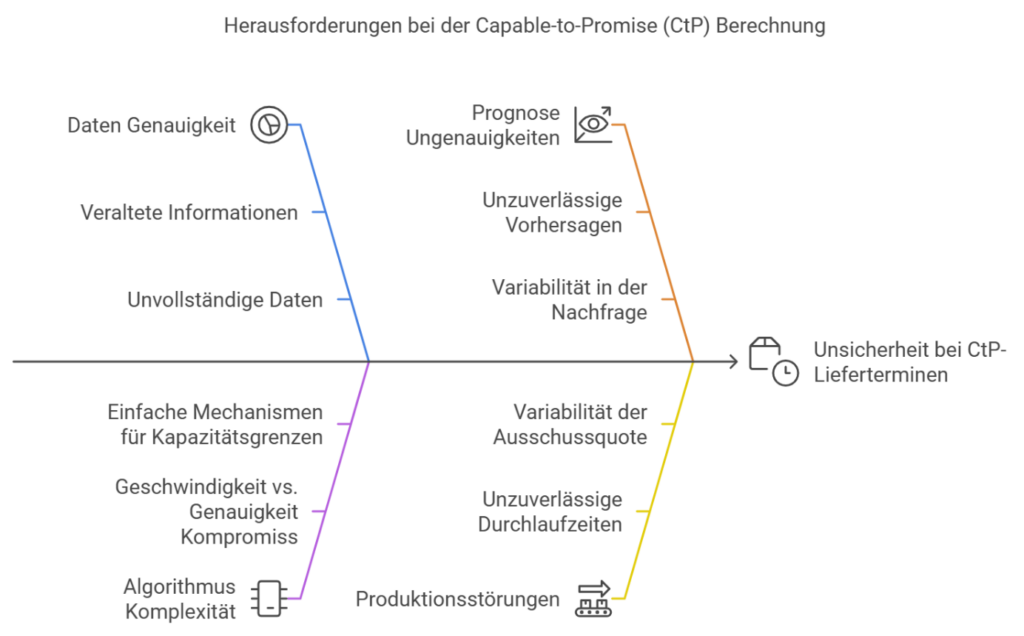Capable-to-promise (CtP) is a function in material requirements planning that is used to determine realistic delivery dates for an entire sales order or an individual sales order item.
The CtP calculation takes into account the available stocks, the production capacities and the orders already planned, making it possible to make precise statements about delivery dates for customer inquiries.
The CtP calculation is an extended form of the available-to-promise (AtP) calculation, in which only stocks and future material availability are taken into account, but no capacity limits in production.
The biggest challenges in the CtP calculation are the timeliness and accuracy of the input data and the calculation algorithms used.
In addition to existing customer and production orders, material stocks and production capacities are also taken into account for the CtP calculation, which means that this information must always be up-to-date and complete.
The further into the future the CtP calculation looks in order to determine a delivery date, the more uncertainties influence the process.
Forecasting inaccuracies, disruptions in production, unreliable delivery times for procurement items, fluctuating scrap figures and other factors often lead to a certain degree of uncertainty in the result.
An additional challenge lies in the complexity of the calculation algorithms, which have to find a compromise between calculation speed and result accuracy.
The mechanisms for shifting deadlines in the event of capacity bottlenecks in the CtP calculation often follow relatively simple principles, which may differ from those of subsequent automatic detailed planning or manual order scheduling on the store floor.

Our tip:
Consider carefully whether the technical effort and data maintenance required for a CtP calculation are actually justified. In our experience, this effort is often not worthwhile in relation to the limited reliability of the calculated delivery dates.
The planning algorithm of a CtP calculation generally works differently and usually more simply than the optimization algorithms of detailed production planning (PP/DS) and therefore leads to different results compared to the PP/DS calculation.
This can lead to considerable discrepancies, especially when determining short-term delivery dates for customer inquiries.
If you have already implemented detailed production planning (PP/DS) in your company, this usually offers more reliable delivery dates for customer orders whose completion lies within the planning horizon of the PP/DS calculation than a CtP calculation with its significantly simpler calculations.

